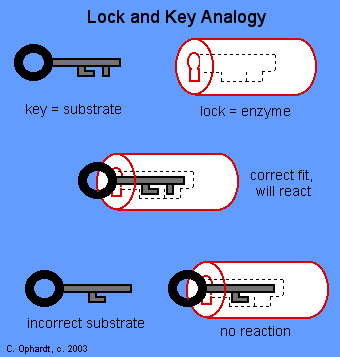Why are enzymes specific?
1 Answer
In biology, the active site is the small portion of an enzyme where substrate molecules bind and undergo a chemical reaction.
This chemical reaction occurs when a substrate collides with and slots into the active site of an enzyme.
The active site is usually found in a 3-D groove or pocket of the enzyme, lined with amino acid residues (or nucleotides in RNA enzymes).
These residues are involved in recognition of the substrate.
Residues that directly participate in the catalytic reaction mechanism are called active site residues. After an active site has been involved in a reaction, it can be used again.
Lock and Key Theory: The shape of the enzyme's active site is complementary to that of its substrate. Just as a key is needed to open a lock.

Some think that an induced fit theory will explain things better. When an enzyme binds to the appropriate substrate, subtle changes in the active site occur. This alteration of the active site is known as an induced fit. Induced fit enhances catalysis, as the enzyme converts substrate to product.
Release of the products restores the enzyme to its original form. The enzyme can repeat this reaction over and over, as long as substrate molecules are present.

